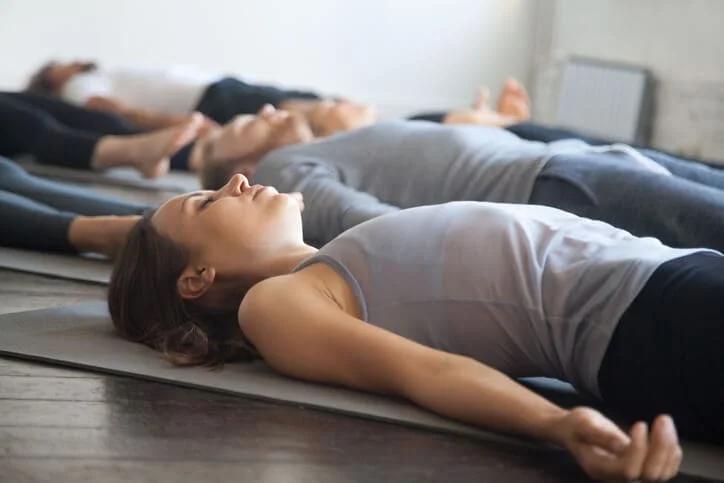If you have ever taken a yoga class and a pilates class, you might be wondering what the difference is between Pilates and yoga, since a lot of the poses seem quite similar. So what differentiates the two different practices?
Pilates and yoga are both mind-body practices that focus on strength, flexibility, and overall well-being, and you’ll find quite a few similarities, but there are also some key differences in terms of their origins, principles, and the emphasis placed on specific aspects of the training.
Here are some key aspects of Pilates and yoga:
Pilates origin and system.
Pilates was developed by Joseph Pilates in the early 20th century and was inspired by yoga and many other forms of exercises such as martial arts, acrobatics, and weight lifting. It originally gained popularity as a rehabilitation method for injured dancers. Its primary focus is on core strength, stability, and overall body conditioning. The exercises often involve controlled movements targeting specific muscle groups. Pilates can be performed on a mat, like yoga, but most often incorporates specialized equipment such as reformers and barrels. The equipment is there to provide resistance to enhance the effectiveness of the exercises.
Pilates emphasizes a breathing pattern that often involves deep diaphragmatic breathing. The breath is coordinated with movement to enhance control and focus. The training follows a specific set of principles which include; concentration, control, centering, precision, breath, and flow. These principles guide the execution of exercises and movements.
Yoga origin and system
The origin of yoga has ancient roots. Originally an Indian practice, said to have existed for thousands of years. It encompasses a wide range of practices, philosophies, and traditions. Over the last 100 years, this practice has evolved into what we today consider yoga. When we practice yoga today it is the product of a natural evolvement of incorporation of new knowledge and movement science to accommodate modern life and what we need in the 21st century.
Yoga is a holistic practice that includes movement, breath, meditation, and ethical principles. Today a whole branch of yoga styles exists, each with specific guidelines and focus depending on the style. But all honor the guiding principles of mindfulness through movement, breath, and deepening self-knowledge. The principles of yoga extend way beyond the physical practice itself and act as a way of experiencing personal development and growth.
Yoga is typically practiced on a mat and requires minimal equipment. Breath awareness is a crucial aspect and different techniques are used to enhance the connection between the body, mind, and spirit. Yoga can be adapted to the individual and practiced as a movement-focused YANG practice, and mindfulness-focused YAN practice, and are often a mix of the two. It promotes flexibility, balance, and strength while also encouraging mindfulness and introspection.
You might also like “10 benefits for seniors when practicing yoga.“
Similarities
- Both Pilates and yoga contribute to improved posture, flexibility, balance, and overall body awareness.
- They can be adapted for different fitness levels and are often used as complementary practices.
- Both practices add to increased body awareness and increased concentration.
- They help prevent and rehabilitate injuries.
Differences
Pilates focuses on strengthening – Yoga focuses on the whole body incl. the mind, stretching, flexibility, and strength.
Pilates works the body with a stable base of support – Yoga only needs a mat (you can even do without) and can be practiced anywhere.
Pilates is a more physical form of exercise – Yoga is a physical and mindfulness exercise with an ethical and spiritual element as well as physical.
Pilates is dynamic and usually keeps you moving – Yoga (depending on the style) can be dynamic, restorative, or a mix of both, depending on individual needs.
Pilates is often used for rehabilitation alongside physiotherapy – Yoga is also great for rehabilitation since the possibility for adaptation is endless, and a variety of props are available.
In my point of view, it is 1-0 for yoga.
So while both Pilates and yoga offer numerous benefits for physical and mental well-being, Pilates tends to have a physical training focus, with a specific focus on core strength and controlled movements, while yoga being a holistic practice encompasses a broader range of practices with an emphasis on not only physical training but also on holistic well-being, personal growth and spiritual wellbeing.
It is no secret, that I adore yoga. We often don’t have unlimited time and resources as our disposable, so having a practice that works on so many levels is amazing. The biggest transformation you get from yoga is not visible to the naked eye but happens on the inside. And since this transformation happens on a much deeper subconscious level, you are reprogramming fundamental parts of yourself. Once done, you have a sustained change and not just a periodic physical improvement.







